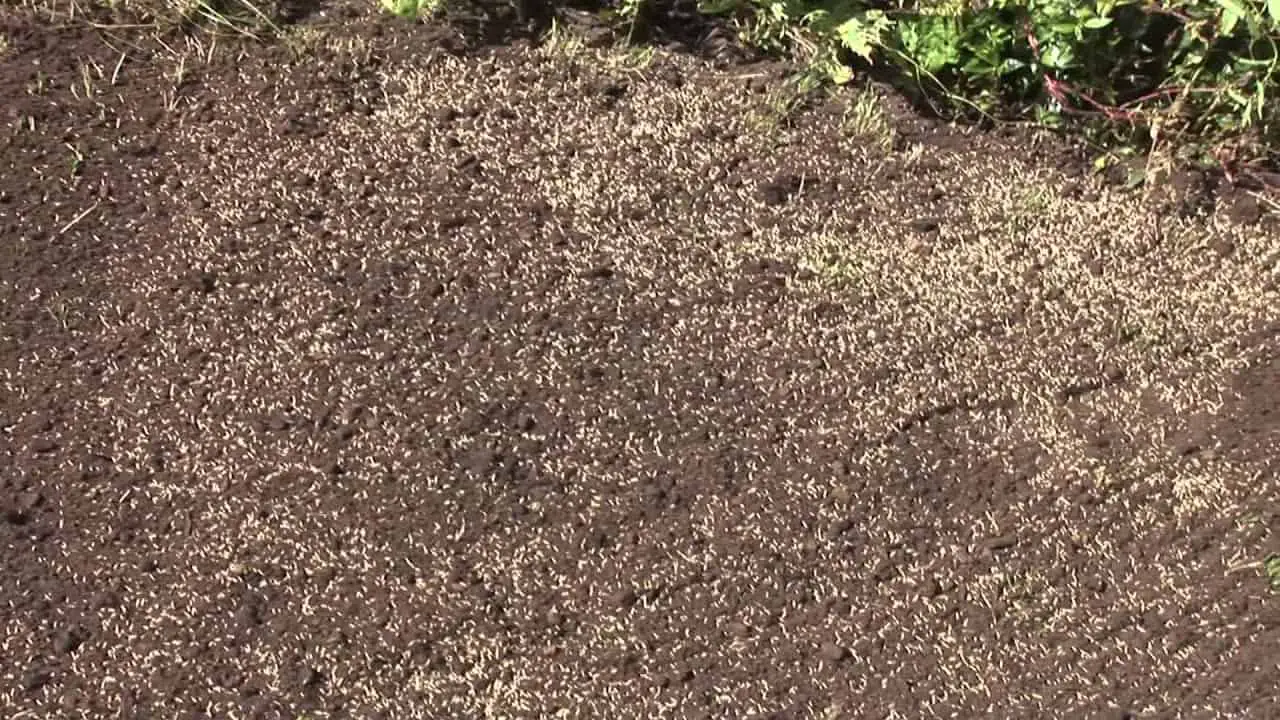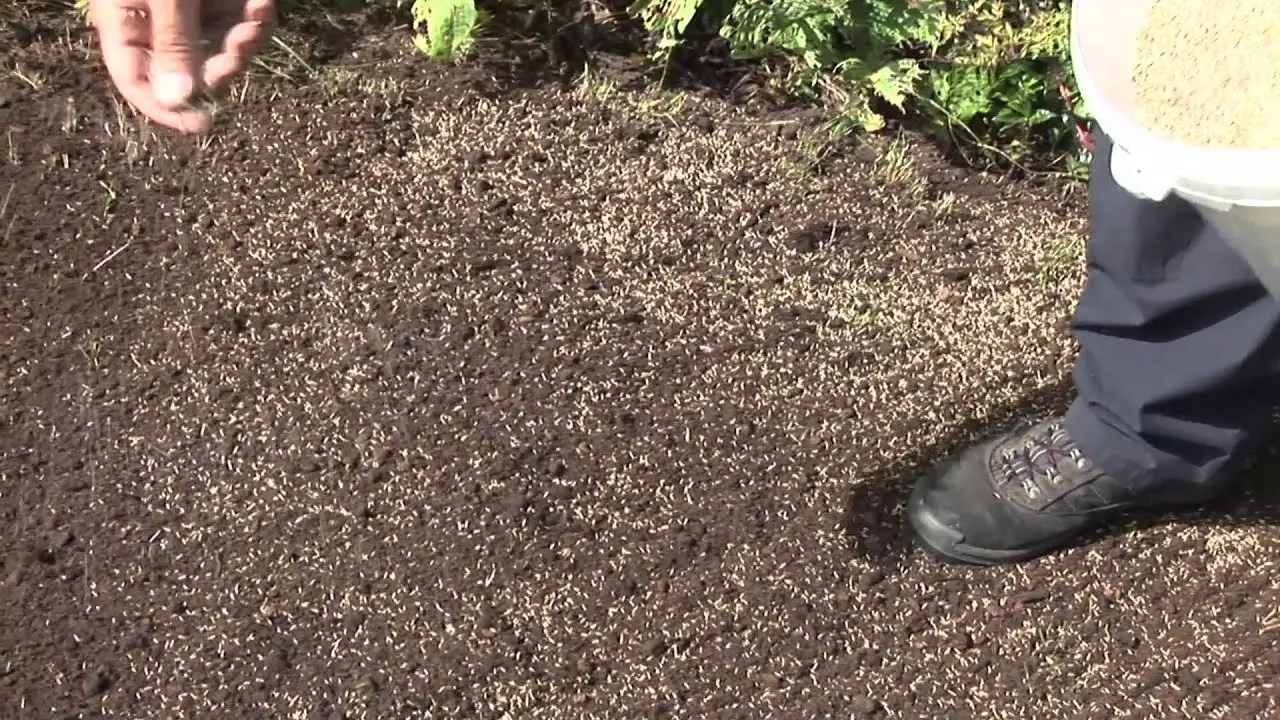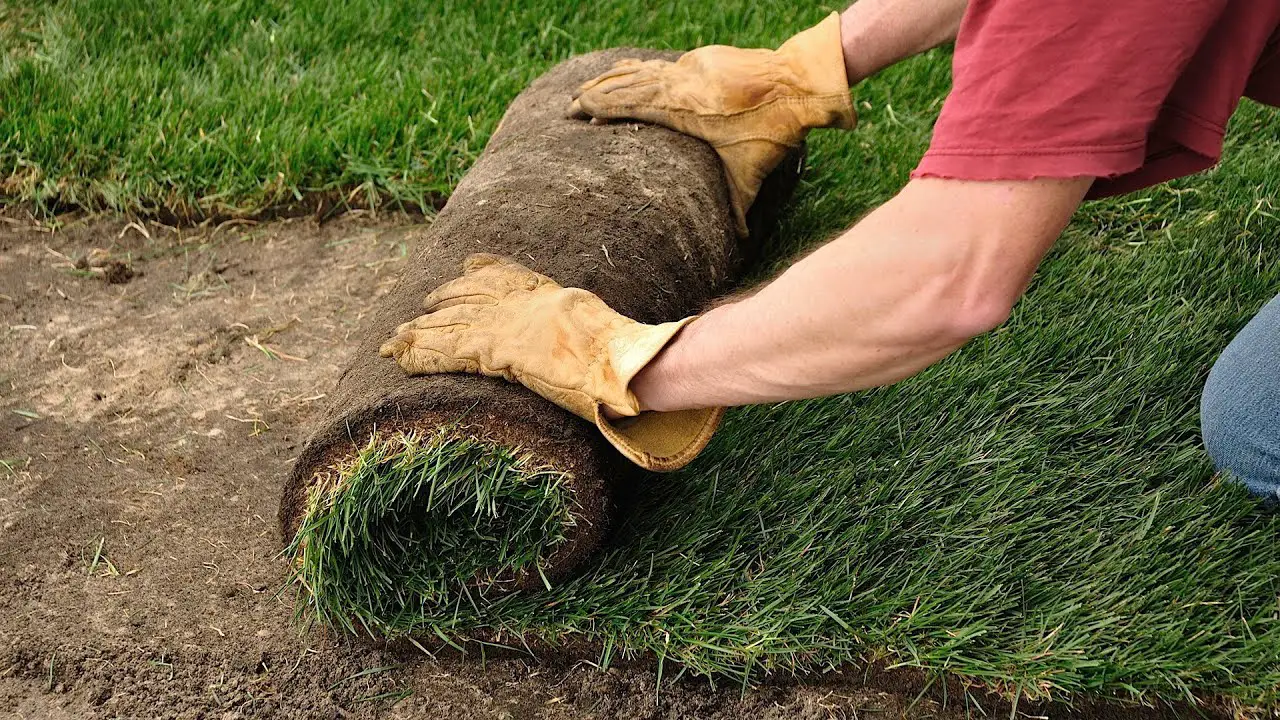Diy Or Hire Professionals
There are some benefits to hiring a professional lawn service A professional lawn care company can help you make sure that overseeding is something your lawn actually needs. Since patchy, scraggly lawns can be caused by other problems, you could be wasting your time and money on overseeding. A professional lawn care service can thoroughly evaluate your lawn and come up with a more complete plan to get your lawn green and healthy.
Professional lawn service also have more advanced equipment than most homeowners. Tools like de-thatchers, power rakes, and slit seeders get the job done quickly, accurately, and more effectively than you can with a rake and a seed spreader. Ensuring that the job is done right the first time is often well worth the investment.Regardless of your approach, overseeding is an easy and effective way to give your lawn a boost and help it look great for years to come.
The 8 Stages In Creating A New Lawn From Grass Seed
Get Your Seed Bed Prepared To Perfection
We hate to sound like a school teacher, but it is true that if you fail to prepare – you should prepare to fail. Preparing your seedbed well goes a long way to ensuring successful germination and the future growth of your lawn. One of the first things you should consider is the quality of the soil you are working with – determining what soil type you have will greatly help this. In some instances, you may have extremely poor soil quality and it may be advisable to add top soil. Other soil types – sandy, clay and loam can all be worked with but will still need to be well prepared. The ideal seedbed should be:
To find out more about how to achieve this – follow our How to prepare the perfect seedbed guide.
Recommended Reading: Recycle Lawn Mowers
Grass Seed Germination Rates By Grass Type
- Bahiagrass seed: 10-28 days
- Centipede grass seed: 14-28 weeks.
- Fescue grass seed: 10-14 days.
- Annual ryegrass seed, perennial ryegrass seed: 5-10 days.
- St. Augustinegrass: Rarely grown from seed, propagated by plugs and sod.
- Zoysia grass seed: 14-21 days.
Even if you planted just one turfgrass variety, the grass seeds wont all pop up at once. Some will be buried a bit deeper or have a different rate of water absorption. Stay with your watering regimen until you are sure you have given all the seeds the best shot you can at taking root.
Keep foot traffic to a minimum during this time. You can also consider putting up Please keep off the new grass signs to discourage accidental trampling by your kids and neighbors .
How Long Does It Take For Grass Seed To Germinate

Some varieties of turfgrass take longer to germinate than others. For example, perennial rye grass germinates in as little as 3 to 5 days, fescues take more like 10 days, Kentucky bluegrass takes 2 to 3 weeks, and warm-season grasses like centipede, Bermuda, and zoysia grasses can take over a month. If your grass seed is a mixture of varieties, know that not all of them will germinate at the same time. To encourage good germination and a healthy start no matter which type of grass seed you planted, its critical that you keep the seeded area and the young plants well-watered until they are established. See the section below on watering for more info on how and when to water new grass.
Don’t Miss: Cleaning Mold Off Outdoor Cushions
Clear The Area Of Any Vegetation And Debris
Any plants, weeds and remains of an old lawn need to be taken away before you can create a new lawn by sowing grass seed. Either use a sharp spade to lift old turf and plants from the surface, or apply a systemic weedkiller such as Roundup. If you choose weedkiller, it will take 3 weeks or so to kill the roots and leaves of the plants.
A family lawn needs to cope with all sorts of activities. Choose a grass seed that will grow into a hardwearing lawn.
What Are Some Of The Challenges Of Growing A Lawn In Maryland
A year-round deep green lawn is not an attainable goal in Maryland. The state is located in the transition zone . We can grow both cool-season grasses like tall fescue and warm-season grasses like zoysia but weather conditions are not favorable for either the entire year. Cool-season grasses go dormant in the summer and warm-season grasses go dormant in the fall.
Read Also: How To Dispose Of Old Lawn Mower Gas
When To Overseed Your Lawn
The best time to overseed your lawn with cool-season grasses, like Jonathan Green Black Beauty grass seed, is late summer to early fall . At this time of year, the soil is still warm, which will help with seed germination, and the cooler air temperatures and rainfall are great for grass growth. Overseeding lawns in fall also reduces competition from summer weeds such as crabgrass. The second-best time for overseeding is in early spring .
Mowing A New Lawn: Be Gentle
Be careful with the lawnmower the first few times your new turfgrass is mowed. The roots will not be long or well-established, so it will be easy to accidentally rip up the young plants. Sharpen the mowers blade, so you cut, not tear the tender plants. Try to start the mower on a flat surface away from the lawn, and minimize the number of turns you make with the mower. Abide by the rule of , which is to never remove more than a third of a grass plant in one mow.
Once you have mowed at least once, cut back on your frequent shallow watering, and switch to watering a couple of times a week, deeply. Get water down to six or eight inches deep to encourage your new lawn to root deeply. Once established the lawn will start spreading to cover any gaps.
After about six to eight weeks, your lawn should be well-established. Hit it with a little more fertilizer to encourage deep roots, and take down your keep off the new lawn signs. Your new lawn is ready for you.
Also Check: Best Small Riding Lawn Mower 2017
Water And Watch: Your Post
All your hard work so far will go for naught unless you keep an eye on the fledgling grass seeds and attend to their needs as they emerge. Seeds only get one shot at germination, so what you do now is critical.
That means water.
You want to keep that top layer of soil ¼ to ½ inch deep moist. If a grass seed dries out, it dies out. Some have likened this part of lawn-building to caring for an infant because both young babies and young lawns need constant attention.
Likely youll be dealing with several variables. Part of the lawn may be shadier, part may have more porous soil, or part may be sloped. So observe and adjust your watering accordingly.
Keep the soil moist, but too much water is as bad as too little. Overly vigorous watering could wash the seeds away. So keep the soil moist but not soggy. A misting attachment on your hose can cut down on the amount of force you use.
Expect to water at least once a day in the morning, and perhaps again in the afternoon if sun and wind have dried out the soil.
Keep in mind that different grass plants germinate at different times. So if you have a mixture of grass seeds, youll need to keep watering it until the slowest-germinating species emerges.
When To Plant Grass Seed
In order for your grass seed to germinate and turn into the luscious lawn you desire, you must know when to plant your seed. Deciding when to begin is determined by the type of grass you are planting. Cool-season grasses such as Kentucky Bluegrass, Perennial Ryegrass, or Tall Fescue is best to plant in spring and early fall when the soil temperature is just right. If you are planting warm-season grasses such as Zoysia, Centipede, or Bermudagrass, early summer is the best time to plant because the soil is warm enough for the seeds to germinate. The Estate grass seed sold at Blains Farm & Fleet is formulated with a blend of cold-season grasses that are built to survive the rugged Midwest climate.
Read Also: Microclover Lawn Colorado
Planting Grass Seed In Spring
Spring is another great time to seed the lawn. Its particularly good if you live where springs are long and cool. For spring planting, its absolutely essential that you continue to regularly water the seed and the sprouted grass through the remainder of the spring, summer, and well into the fall. Establishment failures are often connected to improper watering. Early summer is another possible time, but youll need to water more often.
All Information About Service

Your grass depends on its roots for water and mineral nutrients. In order to effectively plant grass seed you need to create at least a little bit of a seed bed.
How To Plant Grass Seed On Hard Dirt And Succeed Lawn Chick
You May Like: How Often Should I Fertilize My Yard
Three: Watering And Maintenance
Watering is one of the most important aspects of successful overseeding. You need to water the seeds into your lawn immediately after spreading, and continue to water daily until the seeds germinate, which can take up to two weeks. The first watering should be a heavy watering . After that, your watering can be lighter. Once the grass has germinated, be sure to water every few days giving the grass a good deep soaking. When the grass is fully established and the same height as the existing lawn, water it according to the instructions for that type of grass. While the new grass is getting established, try to limit activity on the lawn and avoid mowing as long as possible. Once the grass is the same height as the existing lawn, you can continue to mow as you normally would.
Best Grass Seeds For Southern States
People living in Southern states should select a warm-season grass seed. But the variety of seed will depend on what part of the country you are in.
In the warm, humid Southeast and Gulf Coast states, the favorite seed varieties are:
- Bahiagrass seed. Coarser than any Northern grass, but it grows thick and dense and is tolerant of both heat and drought.
- Bermuda grass seed. This is a hardy but needy grass, which requires high maintenance but stands up well to heavy traffic.
- Buffalograss seed. This warm-season grass seed is the only variety native to North America, so it doesnt need much help to thrive. It is highly drought tolerant and needs little care.
- Centipede grass seed. This grass is slow to grow, but very low in maintenance once established. In climates that stay warm, it has virtually no dormant season, so it stays green year-round unless theres a cold snap.
- Zoysia grass seed. A slow grower, but one of the most cold-tolerant varieties of warm-season grasses.
Another common turfgrass choice in the Deep South, St. Augustine grass, is not commercially sold as seed, since its seedheads are sterile. It is a grass planted from sod.
Read Also: Best Mower For Steep Hills
The Long Road To A Successfully Seeded Lawn
Depending on the exact conditions and the time of year we plant, it can take anywhere from three months to a year from the day a lawn is seeded until it’s fully grown in. A lot goes on in that time, but it can be frustrating if you don’t know what to expect when. Our timeline on the left outlines the major events in a lawn seeding project .
Let’s break down this timeline. Before we can begin, the property must be properly graded, and quality topsoil may need to be added depending on the quality of what’s already there. We then use a machine called a slice-seeder to put down a precisely calibrated amount of grass seed at the proper depth. Straw or another moisture-saving material is typically put down on top of the grass.
Next up is germination, which is just a fancy way of saying the seeds are sprouting. Our favorite type of grass seed is called RTF, and it can be expected to germinate 10-14 days after planting. Usually you won’t see every seed sprouting at once, but if you keep an eye on your lawn it will start to look more and more green every day.
A month to a month and a half after seeding we can start mowing. In the meantime weeds may have gotten taller than the grass, but to give the new turf the best chance of survival we need to wait to mow it. We promise that in the end the weeds will be gone, you just may be stuck with them at first.
How To Plant A New Lawn From Seed
The least expensive way to start a lawn is by seed. Starting a lawn from seed is a snap, especially on an area that is relatively flat. The biggest task is preparing the site and making sure the soil is of good quality. Choosing the right seed is a matter of looking at your yard and your climate. In general there are two broad types of grass: cool season and warm season, each named for the climate and temperature in which it grows best. If you are in a definite warm or cool climate, you can zero in on the grass that will work best for you.
Step 1Step 1Measure the Yard and Buy Seed
Measure the size of the yard then buy the seed you needthe exact amount will depend on the variety of grass, as well as the size of your yard. A few days before planting, water the lawn to a depth of 6 to 8 inches. Plant when the surface of the soil is dry.
Step 2Step 2Prepare the Lawn
Kill the existing grass, rake out debris, grade the yard, and enrich the soil before planting. Give the soil its final grading right before planting.
Step 3Step 3Lay Out an Area of the Lawn
Seed is applied at a rate of so many pounds per 1,000 square feet, depending on the seed. Because drop spreaders are calibrated for fertilizer rather than seed, you’ll have to lay out an area of 1,000 square feet on your own. If the area is irregular or involves several parts of the lawn, mark the boundaries with flour, chalk, or landscapers paint.
Recommended Reading: Where To Sell Used Lawn Equipment
Apply Fertilizer To Add Nutrients
Once you have done this, you will need to provide your soil with the extra nutrients it needs.
Look for a higher quality lawn fertilizer that matches your soils test results, and if you arent sure what to use I highly recommend this Scotts starter fertilizer for Spring planting. It works great for new lawns, and I typically follow it up about 3-4 weeks later with an application of Milorganite, an organic, slow-release lawn fertilizer.
Be aware that many localities regulate what you can and cannot apply to your lawn due to pollution and runoff concerns.
This is especially true for Phosphorous, one of the key ingredients in starter fertilizers .
Before applying any fertilizer to your yard I encourage you to research your local rules so you know what you can, and cannot apply to your lawn.
In my experience, your local extension office is the best place to start.
Correct Existing Lawn Problems
For troubles beyond normal thinning, test your soil and make corrections before overseeding. Follow test recommendations for using soil amendments and repairing bare lawn spots. If needed, take time to dethatch and core aerate compacted lawns so air, moisture and seed can get to the soil. Pennington One Step Complete products combine premium seed with a stabilized-release fertilizer and wood mulch to simplify lawn repairs.
Read Also: Price Of Trugreen Lawn Care
Research And Choose The Right Seed
It might surprise you to know that there are dozens of different types of grass seeds. Some grow better in shaded areas, while others thrive in drier and hotter climates. You may already know what type of grass makes up your lawn, but if youre not sure its best to consult with neighbors or a local home improvement store to find out what type of grass seed does best in your area.
How To Know When To Mow Newly Seeded Grass

Adding new seed to an existing lawn or seeding bare patches of your yard are great ways to add to the look of your lawn this summer. If you do it the right way your lawn will look better than ever, but its important to follow a few tried and tested guidelines to ensure the best results.
Before you can even consider mowing your newly seeded lawn you have to give it the best chance to survive and thrive. It might sound cliche to say timing is everything, but it is when it comes to a newly seeded lawn. Below well look at how to properly seed your lawn how to know when to mow your newly seeded grass.
Also Check: Murray Serial Number
